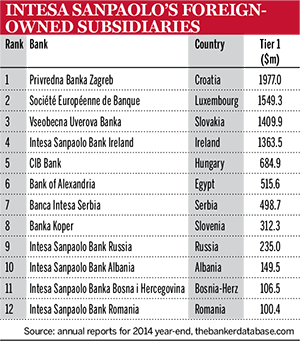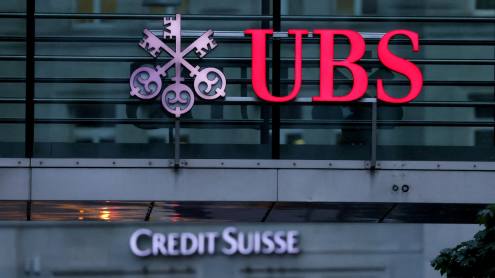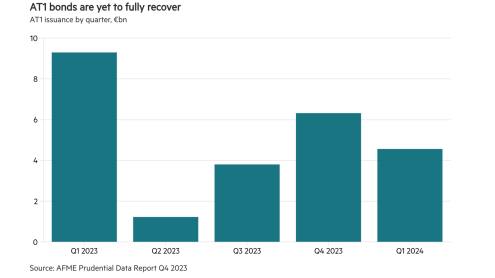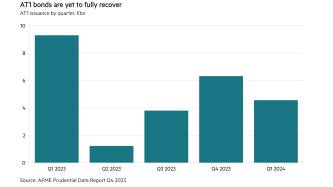
When Carlo Messina took the helm at Intesa Sanpaolo in September 2013, the bank was on its way to publish full-year pre-tax losses, as were most Italian banks, on the back of the country’s ailing economy. Italy had just seen its gross domestic product (GDP) at constant prices fall by 2.8% in 2012, and was on the way to another fall –1.7% – in 2013.
But things have changed for the better and, despite a 0.4% drop in Italy's GDP in 2014, Mr Messina has overseen an improvement in Intesa Sanpaolo’s fortunes. After posting profits of €1.25bn for the 2014 financial year, Italy’s second largest bank by assets and capital has started 2015 even better.
“The first half of 2015 was the best semester since the creation of Intesa Sanpaolo looking at the operating margin but also at net income,” says Mr Messina. “We are now generating an amount of net income that is comparable to the best in class in Europe, so we succeeded in turning our bank from an Italian leader to a European leader. We are very happy with our results because in 18 months we completely transformed the bank and also the attitude of international investors towards our bank.”
International input
International investors make up about 60% of Intesa Sanpaolo’s capital base, compared with about 40% before Mr Messina became chief executive, which helped create conditions to more than double the bank’s market capitalisation from €26bn to €60bn in that time, according to Mr Messina.
Intesa Sanpaolo is also ahead of its 2014-17 business plan and has already generated enough cash flow in the first six months of 2015 to cover the bank’s €2bn dividend commitment for the entire year.

This impressive performance is mainly due to commission and insurance results, while the bank is also well ahead of targets in terms of capital position and leverage, according to Mr Messina. Nevertheless, he is not considering adjusting the bank’s business plan to more ambitious targets. “I prefer to keep the plan [unchanged] and maintain a significant over-delivery,” he says.
Traditionally a country with a strong savings culture, Italy is increasingly turning away from classic bank savings accounts to asset management solutions in the wake of the eurozone’s record low interest rates. “At Intesa Sanpaolo, we are generating net inflows that are second only to BlackRock compared with all other wealth management institutions in Europe,” says Mr Messina, adding that commissions grew by 50% in the first six months of 2015.
To best benefit from the shift to asset management solutions, Intesa decided to merge its two wealth management businesses – Intesa Sanpaolo Private Banking and Fideuram – at the end of June. “There is value in sharing the practices,” says Mr Messina. “We can have much higher synergies. We think that this is a real engine for growth for Intesa Sanpaolo.” The merged entity can utilise Fideuram’s strong network of financial advisors as well as the private bankers in the private banking division.
Life insurance
Another strong trend at Intesa Sanpaolo is driven by the bank’s life insurance subsidiary, Intesa Sanpaolo Vita. The fully consolidated subsidiary of Intesa reported a 33% increase in net income, year on year, as of the end of June 2015. The insurer’s new life business rose by 2.7%, while the group’s assets under management increased by 3.5% in the first six months from €94.88bn in December 2014 to €98.16bn at the end of June.
Credit rating agency Standard & Poor’s noted in June that it expected insurance businesses to enhance Italian banks’ profits in the low-interest-rate environment. “We consider that insurance products’ contribution to banks’ revenue growth and diversification ultimately strengthens their business position,” says Taos Fudji, primary credit analyst at Standard & Poor’s and the main author of the report. “Banks that fully own or have equal joint-venture agreements with insurers stand to gain more than others because as originators they'll be in position to retain margins on life product offerings.”
Intesa Sanpaolo’s life insurance subsidiary is one such example. It is Italy’s third largest life insurer by premiums in 2014, with return on equity of 11%, according to Standard & Poor’s. The subsidiary’s growth and profitability “show some of the benefits of full consolidation”, says Mr Fudji.
“We think that the long-term benefits of full consolidation for... parent banks will likely outweigh the additional risks involved, provided they have full control of managing risks,” adds Mr Fudji. “In general, an integrated bancassurer can unlock greater synergies through a more client-centric focus, because it controls the entire value chain from origination to distribution.”
All that, together with strict cost control and lower provisions, led Intesa Sanpaolo to more than triple its net income results in the first half of 2015, according to Mr Messina. The bank’s cost-to-income ratio is among the lowest in Europe at 45%, while Intesa was able to lower provisions by 30% across all divisions. This is partly due to the bank’s credit quality, but an improvement in Italy’s economy is also a factor. Forecasts by the International Monetary Fund expect the country's GDP to grow by 0.5% in 2015, with levels of about 1.1% in the following four years.
Beyond Italy
But Intesa Sanpaolo is not just Italian; the bank has subsidiaries dotted around central and eastern Europe (CEE), as well as in Egypt – areas that have experienced fluctuating economic performances in recent years. From Ukraine and Russia to Croatia and Egypt, Intesa has different strategies and priorities.
In the most difficult of environments, in Ukraine, Intesa Sanpaolo has the smallest of exposures. “We tried to dispose [of the Ukraine business] but didn’t succeed because Ukraine is a very difficult country to have reliable counterparties that have the approval of the central bank,” says Mr Messina. “Having said that, now we only have €100m of loans remaining. We have €350bn of loans [in total], so €100m is not very significant.” Intesa’s Ukraine operations have been spun off into its 'capital-lite' bank, holding its non-core assets that are set to be disposed of or wound down. Meanwhile, Intesa’s subsidiary in Russia is small but valued for serving Italian clients doing business with Russian counterparties in the respective countries, according to Mr Messina.
CIB Bank in Hungary, meanwhile, the fourth largest bank by capital in the country, has experienced tough times. As with all Hungarian banks, it was hit by high non-performing loans and uncertainty over government plans on bank levies and regulation related to foreign exchange-denominated loans.
“In Hungary we had significant losses in the past but now we can say the situation has improved in a significant way,” says Mr Messina. “We think [we have had] all the negatives and we now hope to have a positive rebound in the results of this subsidiary.”
Ready to grow
Egypt-based AlexBank is Intesa’s odd one out in terms of geography. Operating in a similar way to Intesa Sanpaolo’s Russian subsidiary, AlexBank is serving the bank’s clients working in Egypt, and it is generating good results. The subsidiary reported a 2.4% return on $6.22bn of assets in 2014.
Meanwhile, Mr Messina even sees growth potential for Intesa Sanpaolo in CEE, particularly in Croatia, Serbia and Slovakia, where its market shares are high. Intesa’s Croatian subsidiary, Privredna Banka Zagreb, is the country’s second largest bank by assets and capital, while Banca Intesa Serbia and Slovakia’s Vseobecna Uverova Banka are the countries’ largest banks by capital.
“I am ready to support any kind of growth in these countries because I am very happy with the banks and with the management teams,” says Mr Messina. “But because we have a significant market share, it is not easy to make acquisitions in these countries.” Serbia is attracting increasing attention from Italian investors, he adds, and there are a significant number of Italian clients in both Serbia and Croatia. Slovakia, meanwhile, comes with the added benefit of the sovereign’s credit rating, which is A+ compared with Italy’s BBB-, according to Standard & Poor’s. That can bring Intesa Sanpaolo additional diversification in terms of ratings profile, says Mr Messina.
“We have an improving outlook for the CEE region – we have good entities that are performing well and have also had such a negative performance in Hungary that the improvement now is significant,” says Mr Messina. “In Italy we are seeing a recovery of GDP and great potential for Intesa Sanpaolo, especially in wealth management and life insurance.”
Having just reported the bank’s best ever half-year results, outpacing its 2014-17 business plan, Mr Messina is keen to continue on Intesa Sanpaolo’s winning streak.











